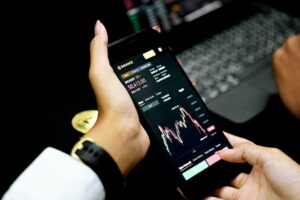Margin Level vs. Leverage in Forex Trading: What’s the Difference?
When it comes to forex trading, understanding key concepts such as margin level and leverage is crucial for traders of all experience levels. These terms are often used interchangeably, but they have distinct meanings and play different roles in the world of forex trading. In this article, we will explore the differences between margin level and leverage and how they impact a trader’s positions and risk management strategies.
Margin level refers to the amount of equity a trader needs to maintain in their trading account to keep their positions open. It is expressed as a percentage and is calculated by dividing the trader’s equity by the margin required for all open positions. The equity is the sum of the trader’s account balance and any unrealized profits or losses from open positions. The margin required is the amount of capital set aside to cover potential losses in a trade.
For example, if a trader has a trading account with $10,000 and their open positions require a margin of $2,000, their margin level would be 500% ($10,000 divided by $2,000 multiplied by 100). This means that the trader has five times the required margin to maintain their positions. A higher margin level indicates a lower risk of a margin call, which occurs when the margin level falls below a certain threshold set by the broker.
Leverage, on the other hand, refers to the ability to control a larger position in the market with a smaller amount of capital. It is expressed as a ratio, such as 1:100, indicating that for every dollar of capital, the trader can control $100 in the market. Leverage allows traders to amplify their potential profits, but it also increases the risk of losses.
Using leverage, traders can open positions larger than their account balance. For example, with a leverage ratio of 1:100, a trader with $10,000 in their account can open a position worth $1,000,000. The leverage ratio determines the margin required to open and maintain a position. In this case, if the leverage ratio is 1:100, the margin required would be 1% of the position size, or $10,000.
It is important to note that while leverage can significantly increase potential profits, it also exposes traders to higher risks. A small move in the market can lead to substantial losses if the position is highly leveraged. Traders must carefully consider their risk tolerance and implement appropriate risk management strategies when using leverage in their trading.
To better understand the relationship between margin level and leverage, let’s consider an example. Suppose a trader has a trading account with $10,000 and decides to open a position worth $100,000 with a leverage ratio of 1:10. In this case, the margin required to open the position would be 10% of the position size, or $10,000.
If the trade goes against the trader and they incur a loss of $5,000, their equity would decrease to $5,000. As a result, the margin level would also decrease, potentially approaching the margin call level set by the broker. If the margin level falls below the margin call level, the broker may close the trader’s positions to prevent further losses.
To summarize, margin level represents the equity in a trader’s account relative to the margin required for open positions, while leverage determines the size of positions traders can control with their capital. Margin level is a measure of risk management, indicating the trader’s ability to maintain their positions, while leverage allows traders to maximize potential profits but also exposes them to higher risks.
In conclusion, understanding the difference between margin level and leverage is essential for successful forex trading. Traders need to carefully manage their margin level to avoid margin calls and control their risk exposure. Additionally, they should consider their risk tolerance and implement appropriate risk management strategies when utilizing leverage in their trading activities. By mastering these concepts, traders can enhance their decision-making and potentially achieve better trading outcomes.













